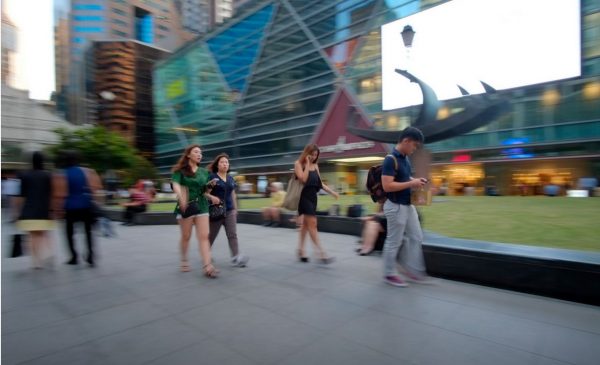
To little surprise, Singtel and a StarHub-M1 alliance yesterday won a bid to build Singapore’s two nationwide 5G networks that promise to connect up millions of smart devices such as autonomous cars in the years ahead.
TPG Telecom, the smallest and newest telecom operator in the country, had thrown in a bid for the next-generation network as well, but it was snubbed by the government regulator.
Awarding the licences to the largest players here, the Infocomm Media Development Authority (IMDA) said other operators, such as TPG and existing virtual players, could offer 5G by leasing the networks from the licence holders.
These telcos will have to provide coverage for at least half of Singapore by end-2022, scaling up to nationwide coverage by end-2025, the regulator added in a media release yesterday.
Singapore’s version of 5G is taking longer than others elsewhere, such as the first networks in the United States, because it does not ride on existing 4G networks and requires a more comprehensive setup.
This so-called “standalone” 5G version, says the IMDA, will bring not just faster speeds but also lower latency, which means less lag for new uses such as remote surgery or autonomous cars.
With their nationwide licences, Singtel and the StarHub-M1 joint venture will each get a 100MHz chunk of the airwaves, specifically in the 3.5GHz spectrum.
For that, however, they would have to each cough out S$55 million to the government to use the airwaves, which are a scarce resource.
That won’t be chump change at a time when the world is faced with unprecedented upheaval caused by the novel coronavirus.
Before this, telcos in the country had already been feeling the heat from the intense competition brought on by the entrance of TPG Telecom and virtual operators such as Circles.Life.
By losing out this time, TPG Telecom wouldn’t have lost the game altogether. For sure, it can’t have its own network but if 5G wholesale agreements are highly regulated like for fibre broadband, it can still make a play for low-cost offerings by being a virtual 5G operator.
What might drag it down is the cost of its existing 4G network. You suspect its 4G services would have to be priced lower than 5G offerings when they come online in the years ahead.
And there’s not much margin to play with. Already, TPG’s current S$10-a-month 4G service doesn’t look like a lucrative offering that could help it recoup its investment quickly.
That said, TPG would also be less hampered by the cost and effort of setting up a new 5G network mere months after its 4G services went commercial.
Plus, it should still have several years to compete on 4G before 5G becomes a commonly available offering.
With a steep recession expected this year, it’s unlikely the winners yesterday will be so gungho to splash out the cash and start building immediately.
Indeed, the trio of Singtel, StarHub and M1 could well be thankful that the deadline for 5G rollout is rather kind.
Half of Singapore covered with 5G signals by end-2022? Full coverage by 2025? There’s room to wriggle for all concerned, which will be much appreciated in today’s climate.






